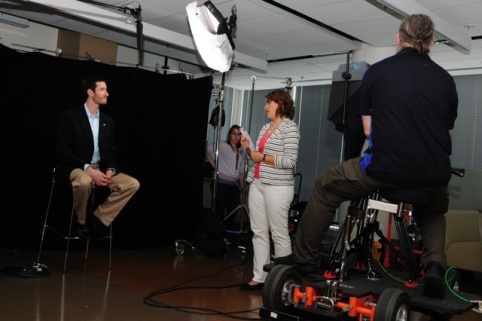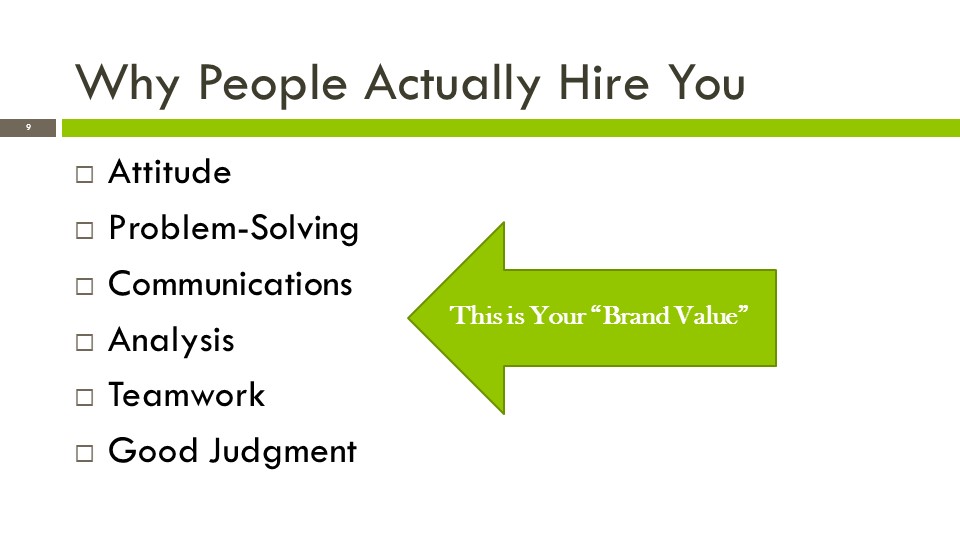While I’m out at NAB Show, I thought I’d share a guest post by Matt Barker, a self-described tech geek, filmmaker and entrepreneur. He is a co-founder of getfilming.com, where he manages the online course production and the filmmaking community.
By Matt Barker
As the owner of an online start up, I spend a lot of time online. Some would even say I spend too much time online (my wife, mainly). I have to admit, staring at the screen all day long can become a little tedious but I wouldn’t change it for anything. I love what I do and I love how the tech and the internet has opened up a whole new world of possibilities. A particular favourite innovation that the online world has brought with it, is online education.
Gone are the days when you’d enrol for a course at your local college or university a year in advance and just wait for the learning to start. You can learn anything online from coding to filmmaking, from algebra to cake decorating and the best part is, you can learn from anywhere in the world, instantly and on your own schedule.
Lots of people reading this post will have enrolled in lots of courses online already. They would have learned a ton of information from expert tutors both on sites that house a plethora of courses like Skillshare or Udemy and from more specialist sites like Team Treehouse or GetFilming, an online Film School. I urge anyone and everyone to at least try online learning but if you still need some convincing, here’s five reasons why online education will help you succeed.
Expert tutors
Unlike traditional learning, when you enrol in an online course you get to choose who you want to learn from. There’s such a huge demand for online courses that there is an endless supply of new tutors, courses and schools opening every day. What this means is that working industry experts are realising that they can make a lot of money selling their knowledge. In some cases, they can make more teaching a subject online than they can make practising it in their day job – but this also means there is a lot of competition. To make decent money from teaching online, they have to produce a complete course for a specific topic that is better than any other course online. Having experts compete with each other to provide amazing education for us, is a great thing.
On Demand
Netflix and other streaming services introduced us to the world of on demand video. We’ve been spoilt and now everyone wants everything yesterday. Fortunately, it means if you decide you want to learn any topic, you will be able to find a course straight away and start learning instantly. If you’re thinking of a career change you can find a relevant eLearning site that caters for your topic and find out if that career is for you in a few days. How many people have spent years in education only to realise they don’t actually like the career they have invested so much time in?
Community of Learners
When you learn online, you don’t just get an expert tutor teaching you what they know. You have a whole community of people learning with you. This is great for motivation, for help if you get stuck, to find recommendations on other courses and it’s also great for networking. That all important element of any career path. It’s all about who you know and by learning online, you instantly connect with a community of people studying the same topic and who knows, maybe that person who helped you with your course can also be the person to give you your big break.
Evolving Courses
The real beauty of learning online is that the curriculum isn’t static. Let’s take creating websites as an example. If you go to college to learn how to code a website, chances are that by the time you finish your course, the technology you have learnt will be outdated. With online courses, it is not just important but necessary for the tutors to keep the content up to date. Any new technology that replaces old technology will be updated in the course to reflect the changes, almost in real time.
Something for Everyone!
The more you look into online education, the more you will find courses in topics you didn’t even know existed. Every single person can find a course that suits them to either learn a new hobby or to completely change their careers. Some eLearning platforms like Skillshare try to cater for every taste (and they do a very good job). Skillshare is more for the casual learner, someone who perhaps wants to develop their skills or make themselves more attractive to their boss. There are subscription learning portals such as Lynda.com, which started out as a platform for office software learning, but has rapidly expanded with hundreds of courses on Photography, Video Production and more. Then there are sites like GetFilming, which is an online film school and community. They specialise in teaching you everything you need to know to pursue your dream career as a filmmaker, whether that’s as a director, screenwriter, VFX artist or any other job in the Film and TV industry.
Conclusion
There are many reasons to want to learn something new. Personal development is a privilege we now have at our fingertips, so I say let’s take full advantage of it. Traditional education for years has been an exceptional way to teach and to learn, there’s no denying that. But if you are thinking of learning a new topic, I would highly recommend looking into online learning.

 So-called “real people” can add power to a video story. For testimonials, someone who actually uses the product can be compelling. If the story focuses on a charity, someone who has lived the day-to-day impact can help raise funds more effectively than an on-camera professional host. A person who works in an organization might be the very best at explaining a new process or tool.
So-called “real people” can add power to a video story. For testimonials, someone who actually uses the product can be compelling. If the story focuses on a charity, someone who has lived the day-to-day impact can help raise funds more effectively than an on-camera professional host. A person who works in an organization might be the very best at explaining a new process or tool. It’s been a cold, rainy spring here in DC, the perfect weather for planning and strategy (not so great for outdoor shoots). And post-NAB Show, it’s a great time to re-assess workflows, consider new technologies, and tidy up that digital media library.
It’s been a cold, rainy spring here in DC, the perfect weather for planning and strategy (not so great for outdoor shoots). And post-NAB Show, it’s a great time to re-assess workflows, consider new technologies, and tidy up that digital media library. eelancers in the creative disciplines—graphic design, video, set design, etc.—we’ve got a lot on our plates. Every day we’ve got to be, well, creative out-of-the-box thinkers, able to leap small budgets in a single bound, staying on the bleeding edge of trends, and up on the latest hardware, software and teams that make it all possible. Plus we’ve got to run our businesses, paying our bills, invoicing our clients, and thinking strategically about our careers and where we want to go next. It’s a tall order. Here are some ways we can break it down and get it done.
eelancers in the creative disciplines—graphic design, video, set design, etc.—we’ve got a lot on our plates. Every day we’ve got to be, well, creative out-of-the-box thinkers, able to leap small budgets in a single bound, staying on the bleeding edge of trends, and up on the latest hardware, software and teams that make it all possible. Plus we’ve got to run our businesses, paying our bills, invoicing our clients, and thinking strategically about our careers and where we want to go next. It’s a tall order. Here are some ways we can break it down and get it done.

 f Siam
f Siam
 It happens more often than we’d all like to admit that inexperienced speakers are selected to deliver important information directly to the camera. Whether they are the head of a department, the leader of an initiative, an enthusiastic volunteer, or the child of the executive producer, this person might not be all that comfortable with a teleprompter, or might not work with cameras and crews every day the way professionals do. That doesn’t mean you can’t direct a confident delivery. But your approach will need to differ from how you’d work with an actor or an experienced on-camera speaker.
It happens more often than we’d all like to admit that inexperienced speakers are selected to deliver important information directly to the camera. Whether they are the head of a department, the leader of an initiative, an enthusiastic volunteer, or the child of the executive producer, this person might not be all that comfortable with a teleprompter, or might not work with cameras and crews every day the way professionals do. That doesn’t mean you can’t direct a confident delivery. But your approach will need to differ from how you’d work with an actor or an experienced on-camera speaker.



